We source our chicken from one farm in Leicestershire. The farm is Pasture for Life certified and rears truly free range, outdoor birds.
Science library

RESOURCES
Regenerative agriculture
A selection of papers and studies relating to regenerative agriculture,
selected by Soil4Climate.org
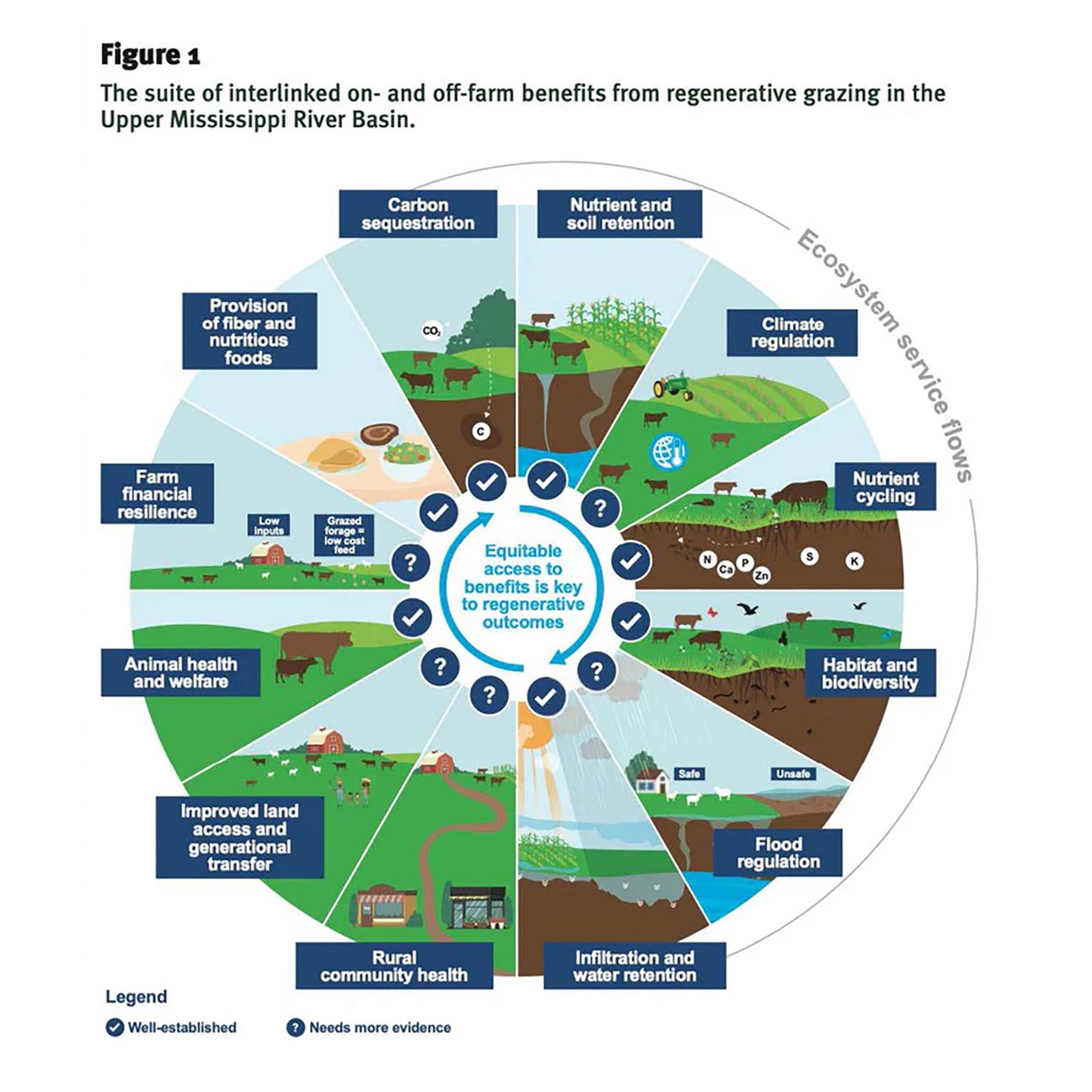
Regenerative Grazing
2021 Viewpoint by Spratt et al. in the Journal of Soil and Water Conservation defines regenerative grazing as a win-win-win component of regenerative agriculture that uses soil health and adaptive livestock management principles to improve farm profitability, human and ecosystem health, and ood system resiliency.

Adaptive multi-paddock grazing
2021 paper by Mosier et al. in Journal of Environmental Management finds that adaptive multi-paddock grazing (AMP) increases both soil carbon and soil nitrogen stocks when compared with conventional grazing (CG).
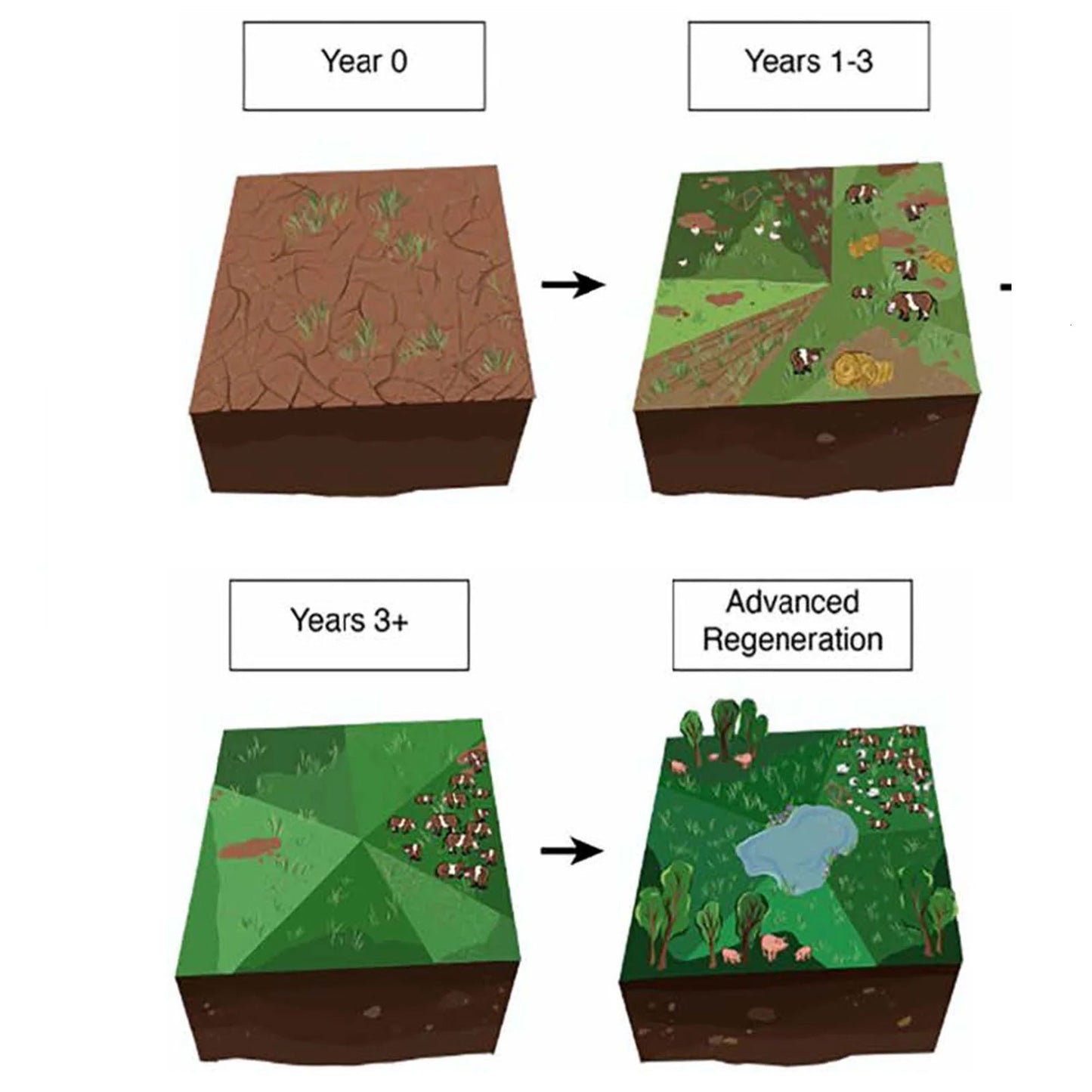
Ecosystem Impacts of a Pastured Livestock System
2020 paper by Rowntree et al. documents the soil carbon increases from “holistic planned grazing” in a multi-species pasture rotation (MSPR) system on the USDA-certified organic White Oak Pastures farm in Clay County, Georgia.

Climate change mitigation as a co-benefit of regenerative ranching:
2020 paper in Interface Focus finds that “‘Managed grazing’ is gaining attention for its potential to contribute to climate change mitigation by reducing bare ground and promoting perennialization, thereby enhancing soil carbon sequestration (SCS).
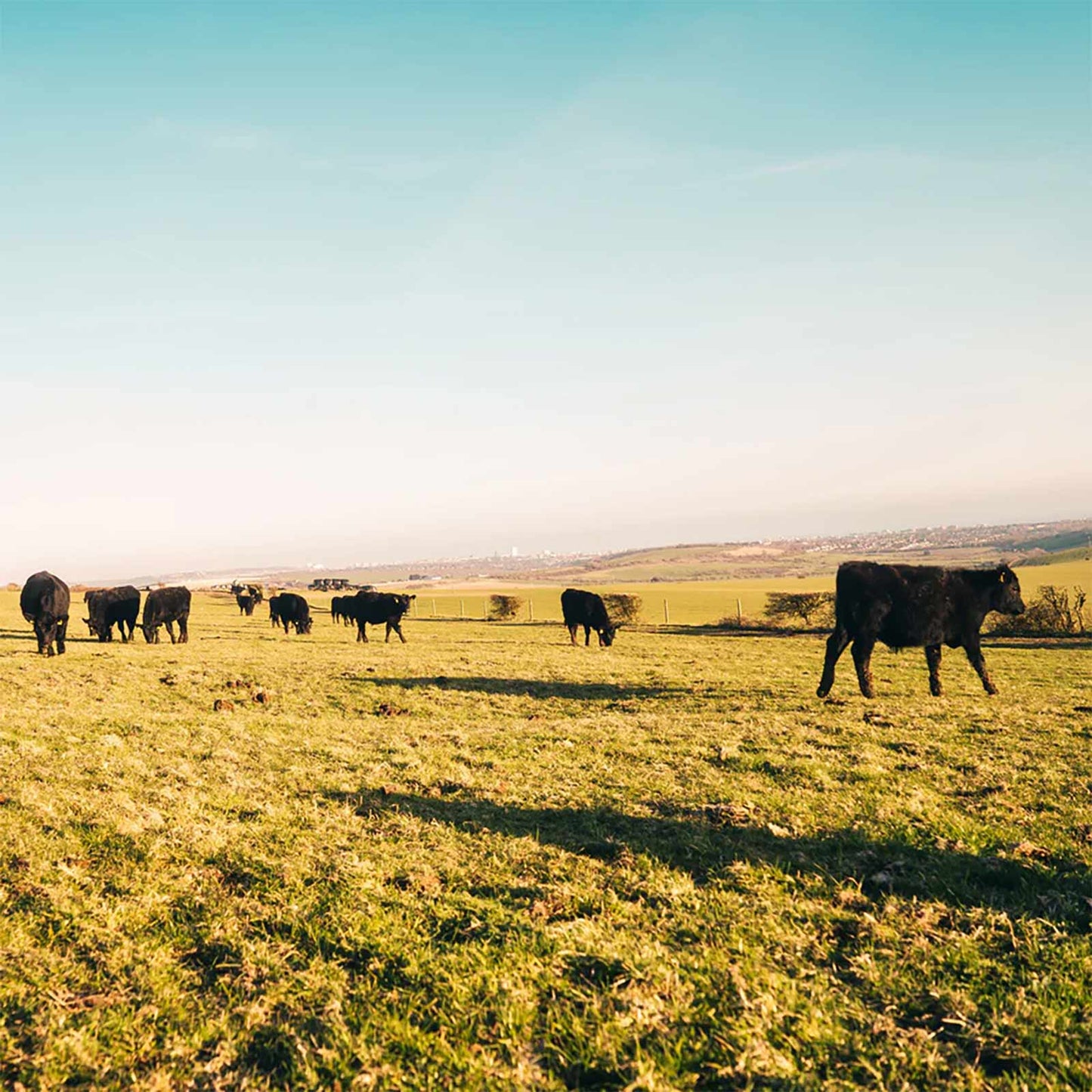
A half century of Holistic Management: what does the evidence reveal?
2020 paper in Agriculture and Human Values provides a meta-analysis of Holistic Management (HM) considering “epistemic” differences between disciplines associated with the agricultural sciences.
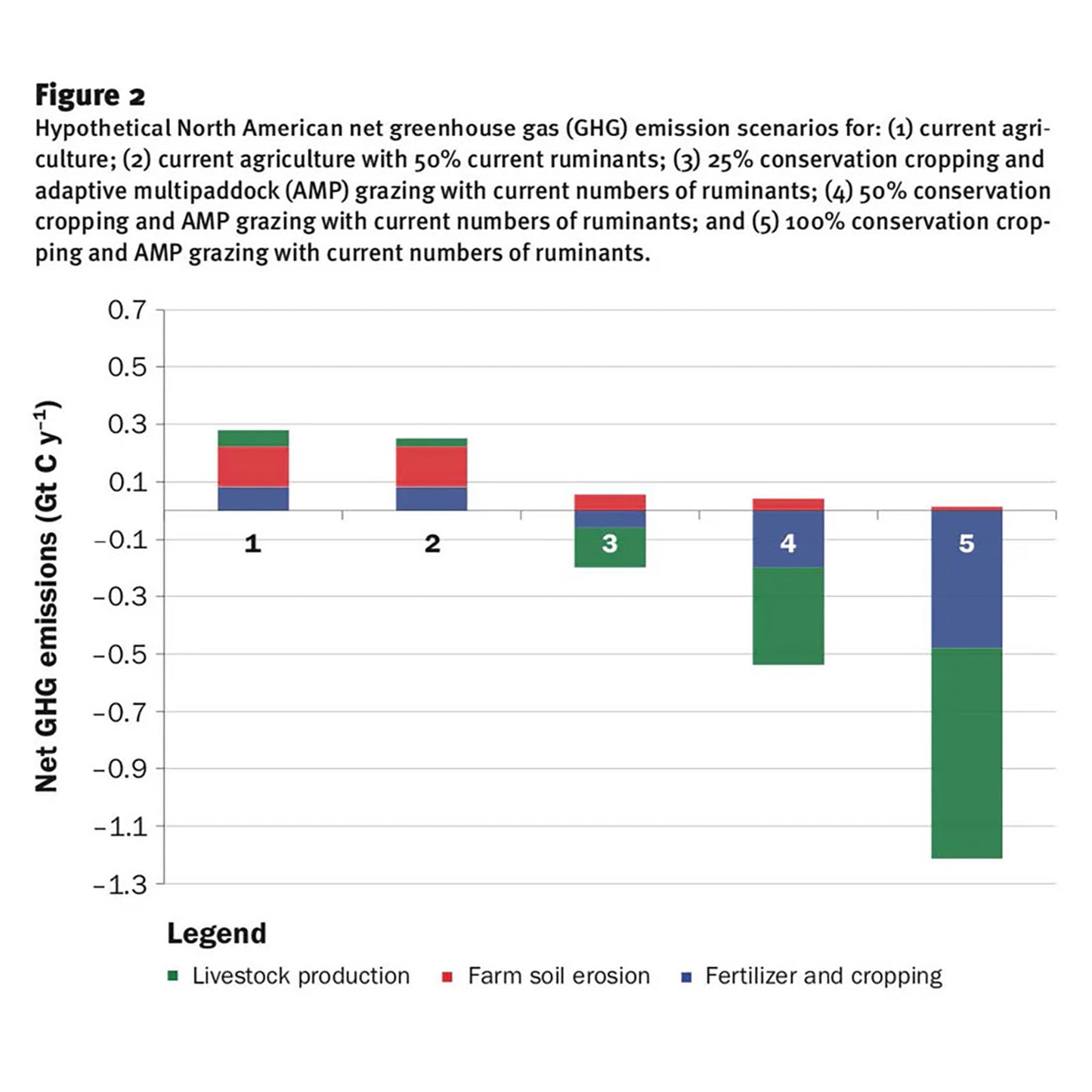
The role of ruminants in reducing agriculture's carbon footprint in North America
2016 Texas A&M study in Journal of Soil and Water Conservation finds 1.2 metric tons of carbon per acre per year drawdown via adaptive multi-paddock grazing and the drawdown potential of North American pasturelands is 800 million metric tons of carbon per year.
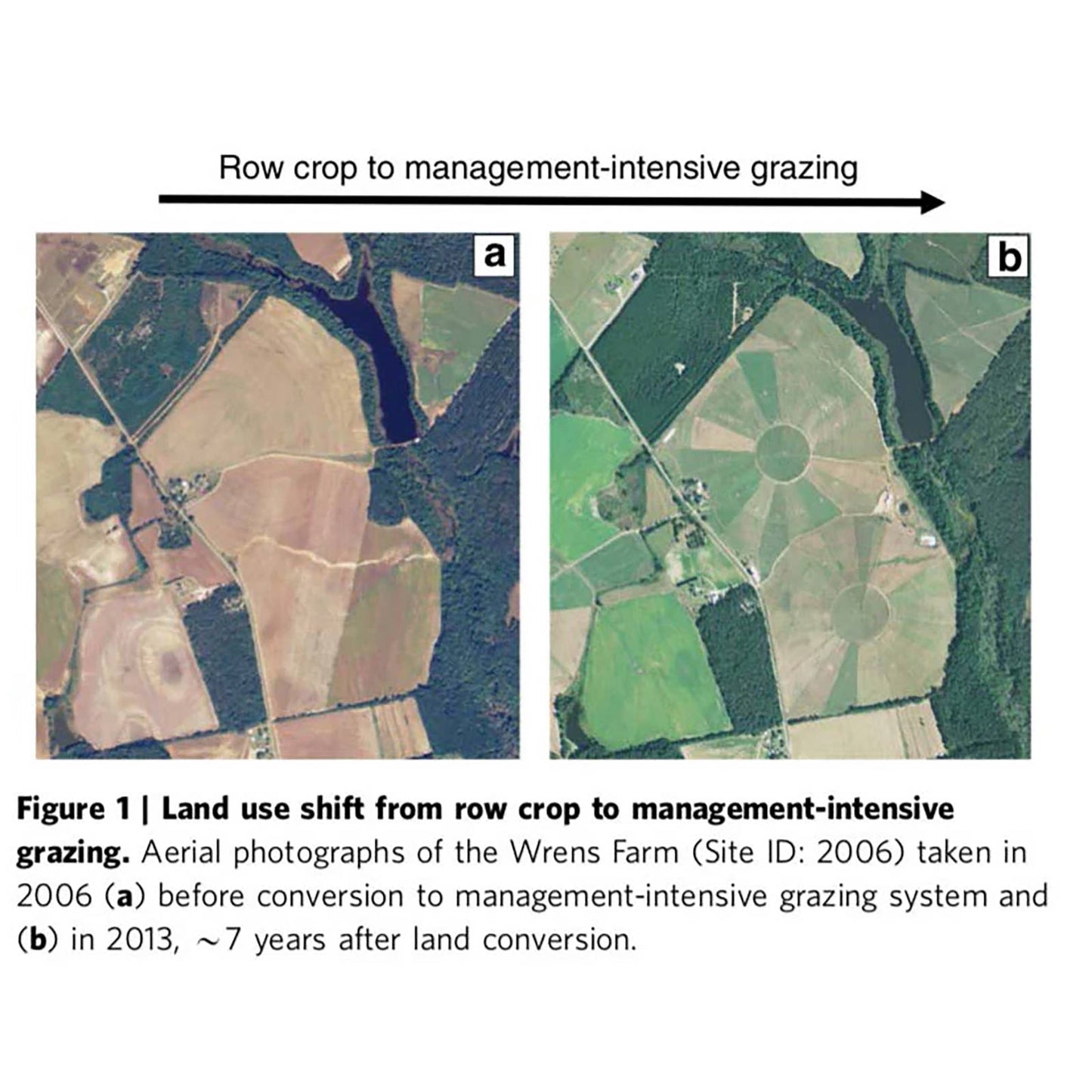
3 metric tons of carbon per acre per year drawdown
2015 University of Georgia study in Nature Communications finds 3 metric tons of carbon per acre per year drawdown following a conversion from row cropping to regenerative grazing.
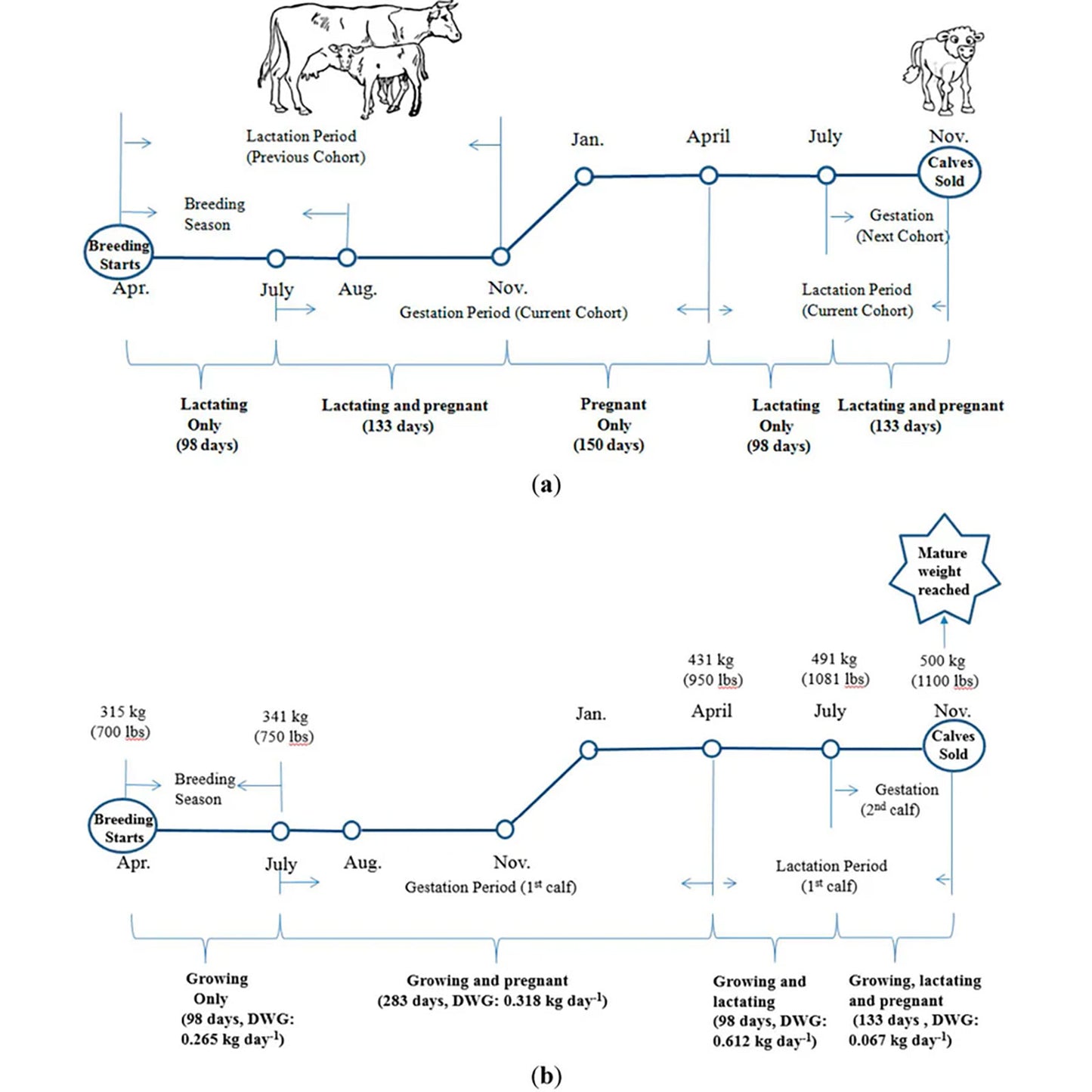
GHG Mitigation Potential of Different Grazing Strategies
2015 paper in Sustainability finds that a conversion from heavy continuous to multi-paddock grazing on cow-calf farms in the US southern Great Plains can result in a carbon sequestration rate in soil of 2 tonnes per hectare per year or approximately 0.89 tonnes per acre per year. In a sensitivity analysis that accounts for farm animal emissions, this sequestration in soil is sufficient to make the farm a net carbon sink for decades.
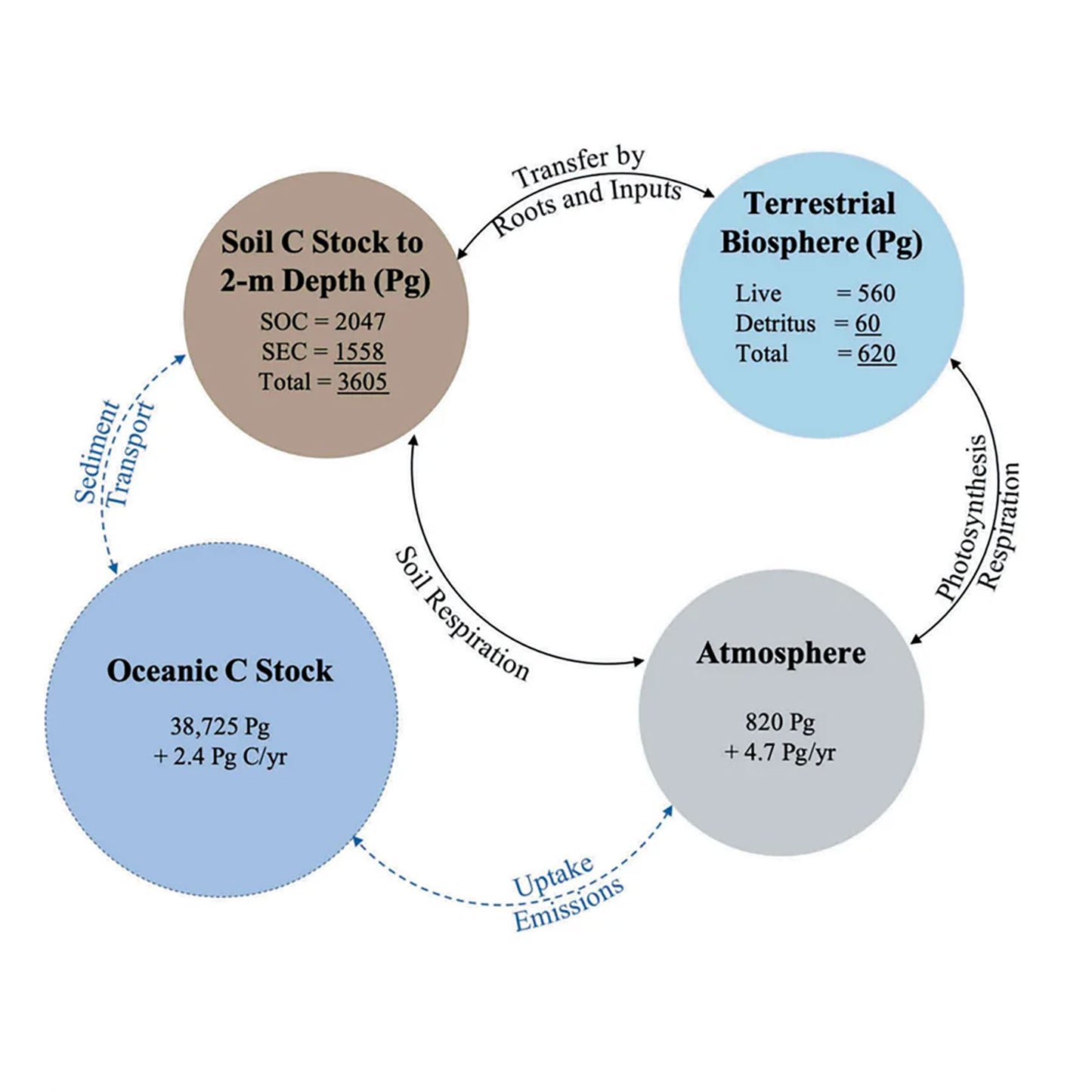
Ecological restoration can remove all excess CO2 from the atmosphere by 2100
Rattan Lal, PhD - ecological restoration can remove all excess CO2 from the atmosphere by 2100 “Soil C [i.e., carbon] sink capacity, between 2020 and 2100, with the global adoption of best management practice which creates a positive soil/ecosystem C budget, is estimated at 178 Pg C for soil, 155 Pg C for biomass, and 333 Pg C for the terrestrial biosphere with a total CO2 drawdown potential of 157 ppm.” Managing soils for negative feedback to climate change and positive impact on food and nutritional security

Dr. Christine Jones. Soil formation can be “breathtakingly rapid”
ACRES U.S.A. ... there’s a widespread belief, actually dogma, that the formation of soil is an exceedingly slow process. ... You describe the formation of topsoil as being breathtakingly rapid. DR. CHRISTINE JONES.
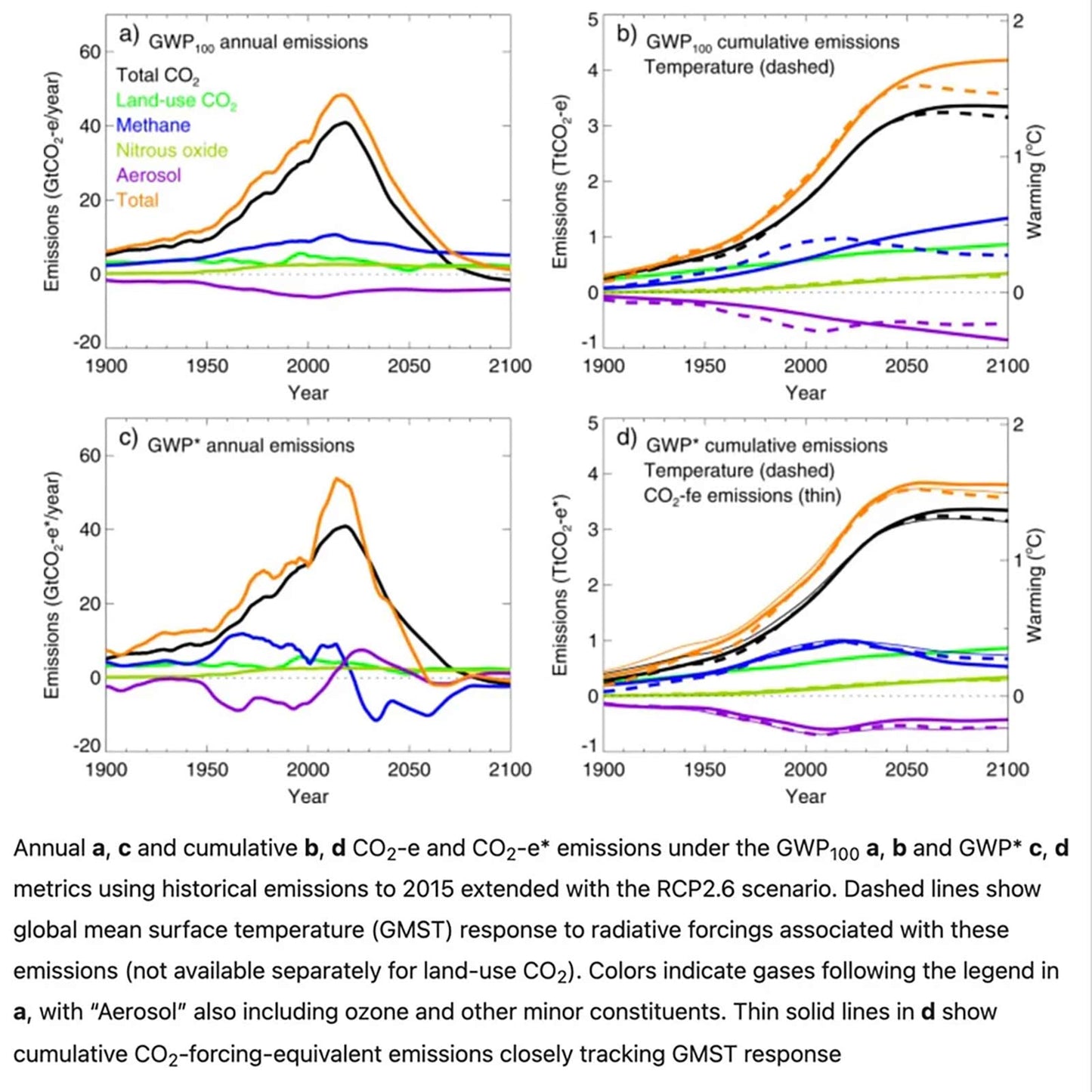
Methane maths
his paper explores an alternative approach to quantifying the contribution of non-CO2 emissions to future temperatures, focussing on the kind of ambitious mitigation scenario that will be required if the goals of the Paris Agreement are to be met. It will also show how such an approach can be used to quantify the contribution of individual regions to future temperature change.
Allen et al., 2018

RESOURCES
Nutrition
Articles and research papers looking at how nutrition
influences our health and wellbeing.
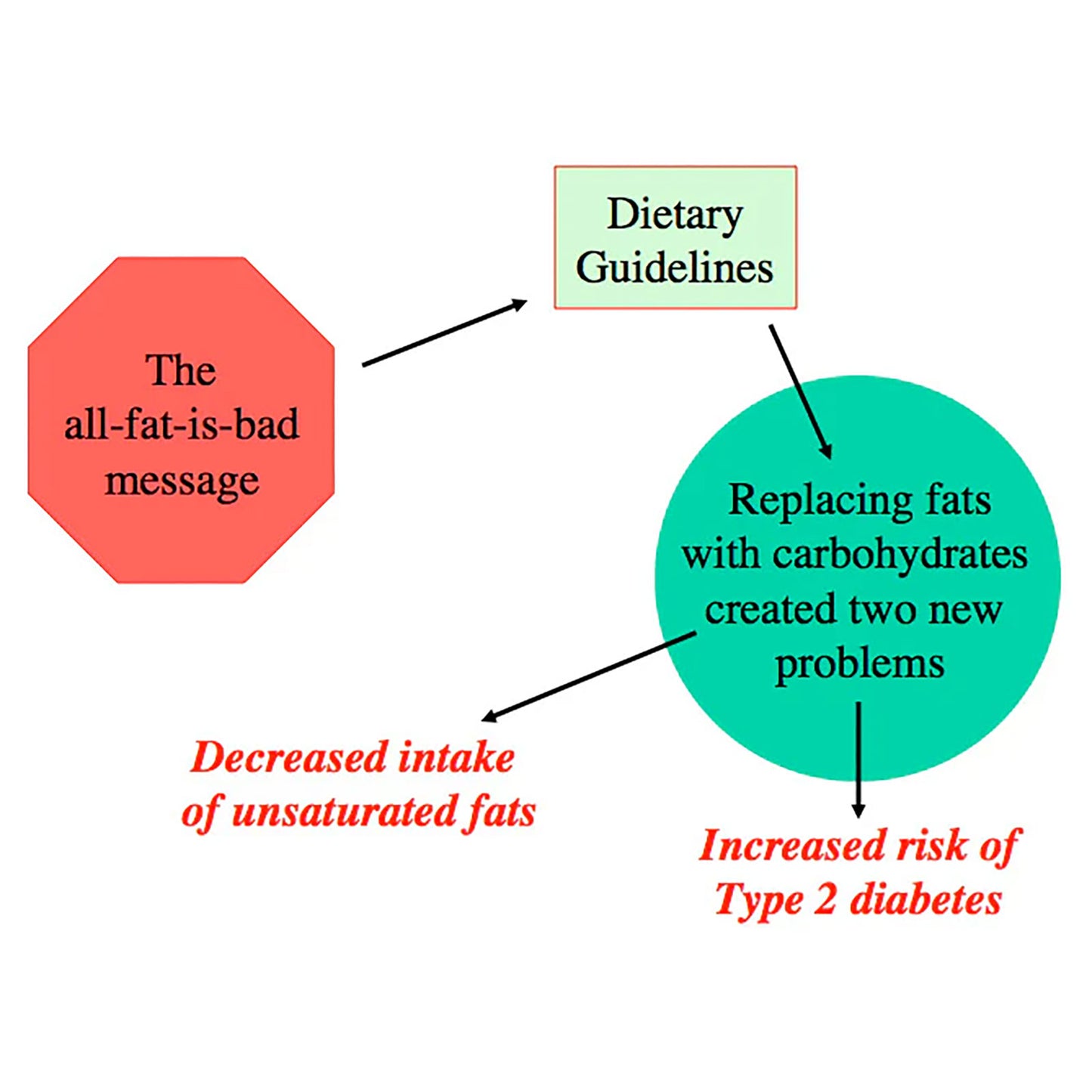
The diet–heart hypothesis: a critique
The low-fat “diet–heart hypothesis” has been controversial for nearly 100 years. The low-fat–high-carbohydrate diet, promulgated vigorously by the National Cholesterol Education Program, National Institutes of Health, and American Heart Association since the Lipid Research Clinics-Primary Prevention Program in 1984, and earlier by the U.S. Department of Agriculture food pyramid, may well have played an unintended role in the current epidemics of obesity, lipid abnormalities, type II diabetes, and metabolic syndromes. This diet can no longer be defended by appeal to the authority of prestigious medical organizations or by rejecting clinical experience and a growing medical literature suggesting that the much-maligned low-carbohydrate–high-protein diet may have a salutary effect on the epidemics in question.

A Low-Carbohydrate, Ketogenic Diet versus a Low-Fat Diet To Treat Obesity and Hyperlipidemia
Objective:
To compare the effects of a low-carbohydrate, ketogenic diet program with those of a low-fat, low-cholesterol, reduced-calorie diet.

Reduction in saturated fat intake for cardiovascular disease
Details: This systematic review and meta-analysis of randomized controlled trials was performed by the Cochrane collaboration — an independent organization of scientists.
This review includes 15 randomized controlled trials with over 59,000 participants.
Each of these studies had a control group, reduced saturated fat or replaced it with other types of fat, lasted for at least 24 months, and looked at hard endpoints, such as heart attacks or death.
Results: The study found no statistically significant effects of reducing saturated fat in regard to heart attacks, strokes, or all-cause deaths.

Evaluating the association of saturated fat with cardiovascular disease
Details: This review looked at evidence from observational studies on the link between dietary saturated fat and risk of heart disease and stroke.
The studies included a total of 347,747 participants, who were followed for 5–23 years.
Results: During follow-up, about 3% of participants (11,006 people) developed heart disease or stroke.
Saturated fat intake wasn’t linked to an increased risk of cardiovascular disease, heart attacks, or strokes, even among those with the highest intake.
Conclusion: This study didn’t find any association between saturated fat intake and cardiovascular disease.

Ruminant meat as a source of conjugated linoleic acid (CLA)
Summary
Ruminant meat is a natural source of conjugated linoleic acid (CLA). Evidence has shown that CLA has many potential health benefits on cancer, coronary heart disease and diabetes. However, to date, all of the published research has been conducted in animals and there are few data in relation to the potential health benefits of CLA in humans. Lamb is the richest meat source of CLA. The main CLA isomer found in meat isc9,t11. Research has shown that cooking or storing meat does not alter its CLA content, but it can be changed by manipulating the diet of the animal. Little information is available that quantifies the contribution of meat to CLA intake. More research is required to further improve our knowledge on the role that meat can play as a vehicle that naturally supplies dietary CLA.

Antimutagenic and some other effects of conjugated linoleic acid
CLA has been shown to inhibit chemically-induced skin, stomach, mammary or colon tumours in mice and rats. The inhibition of mammary tumours in rats is effective regardless of type of carcinogen or type or amount of dietary fat. CLA has also been shown to inhibit cholesterol-induced atherosclerosis in rabbits.

Antioxidant status from pasture or grain-fed cattle
Fresh meat produced on pasture (P and PE) had higher total ferric reducing antioxidant power (FRAP) levels than meat from grain fed-animals.
Meat from pasture-fed animals presented a higher glutathione redox potential compared to grain-fed animals (-156.1±6.1 and -158.1±6.5 vs. -148.1±13 and -149.8±14.6 for P, PE G and GE, respectively), showing that the antioxidant status in fresh meat was affected by diet.

Total iron and heme iron content and their distribution in beef meat and viscera
Your body absorbs heme iron much more efficiently than non-heme iron — the type of iron in plant-derived foods
Thus, meat not only contains a highly bioavailable form of iron but also improves the absorption of non-heme iron from plant foods — a mechanism that has not been fully explained and is referred to as the “meat factor.”



